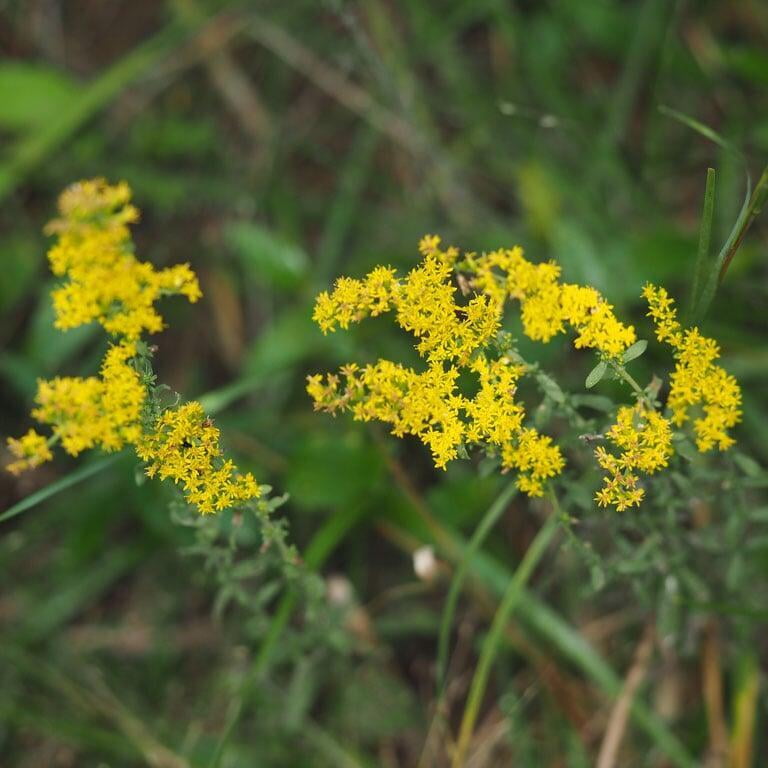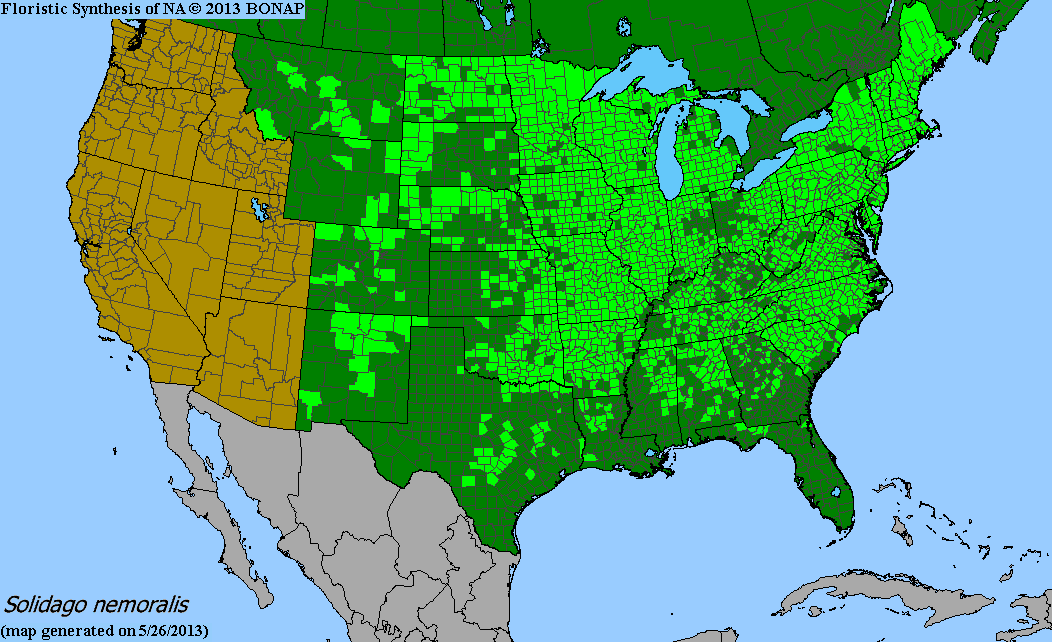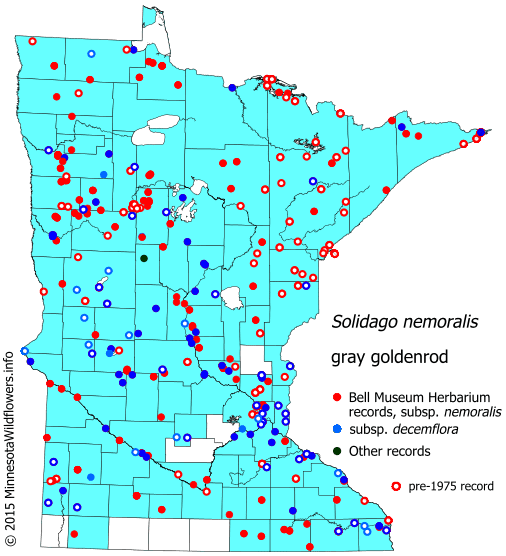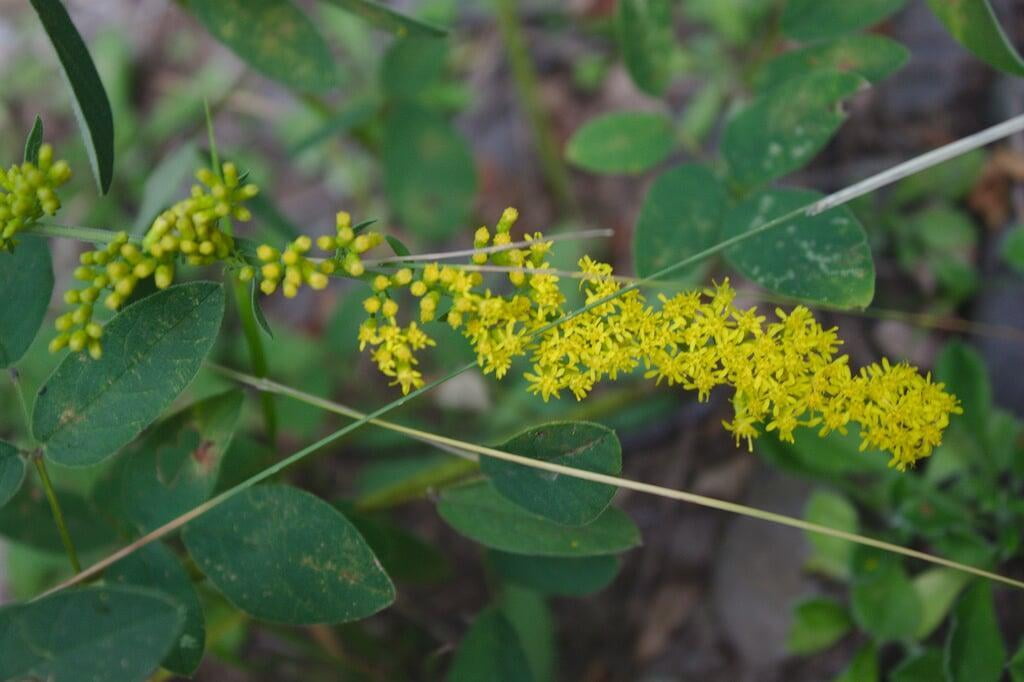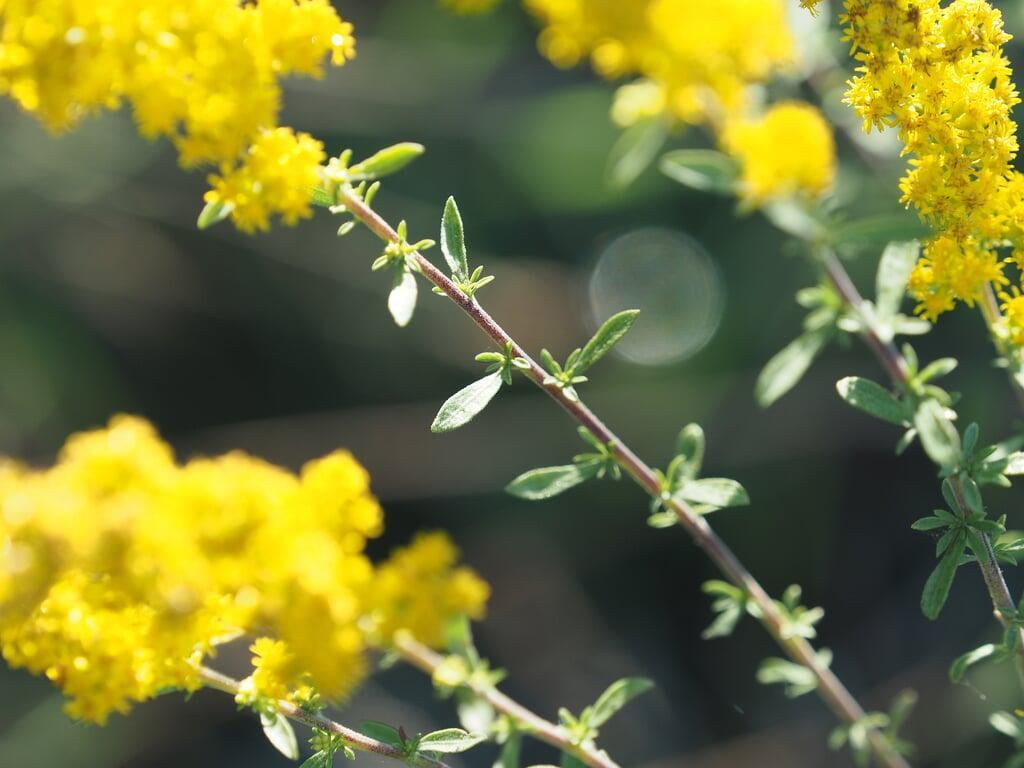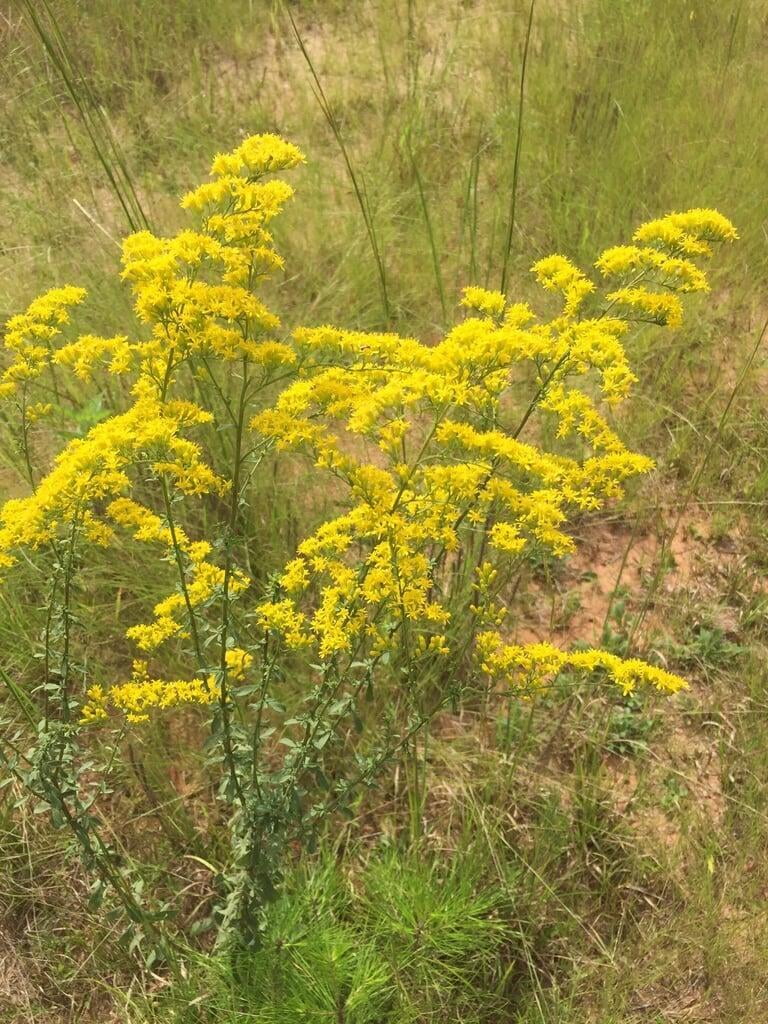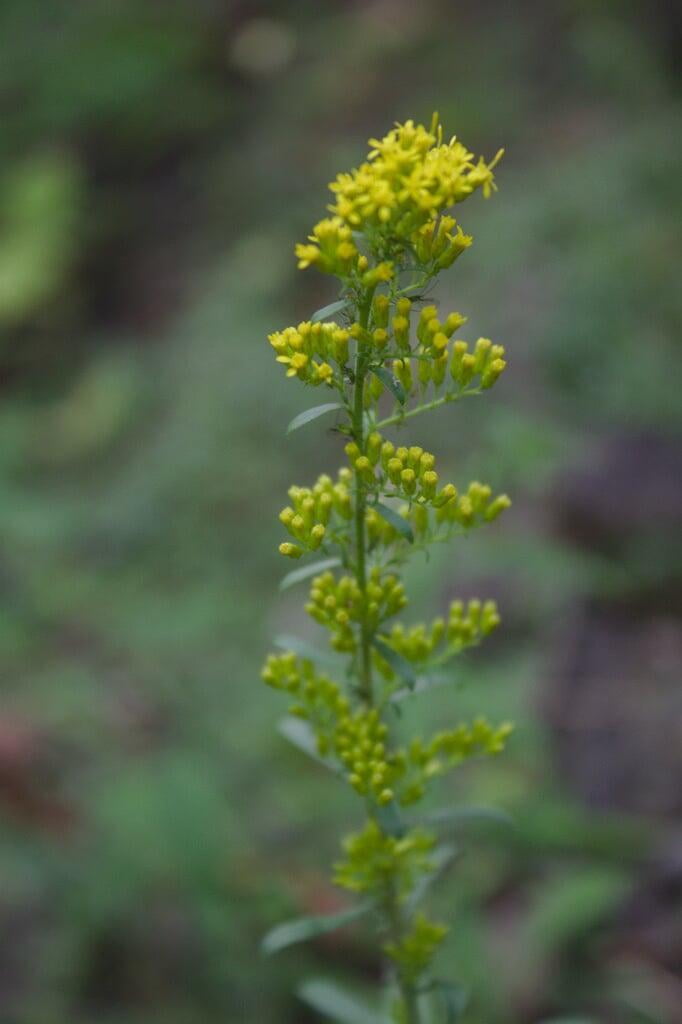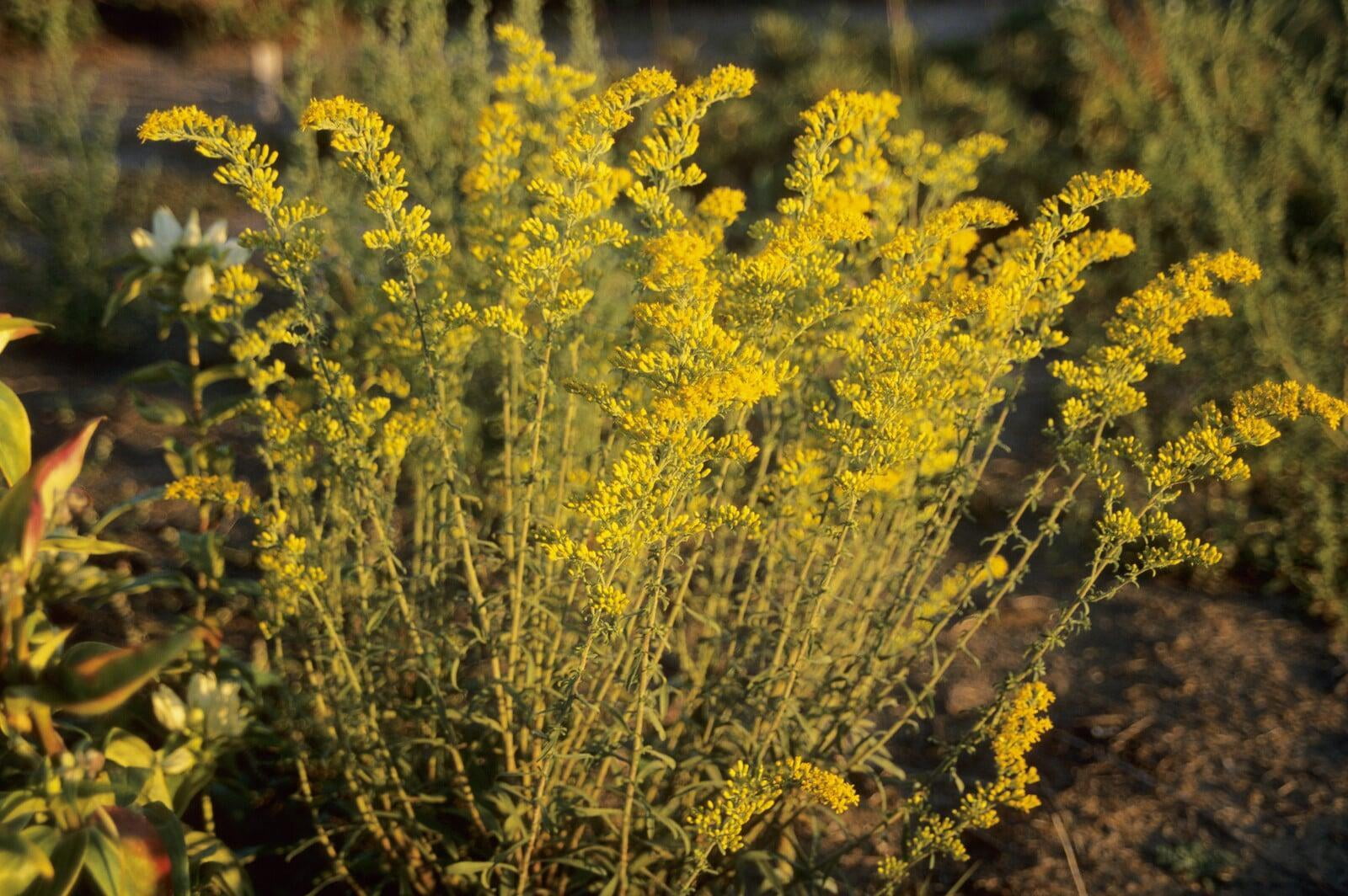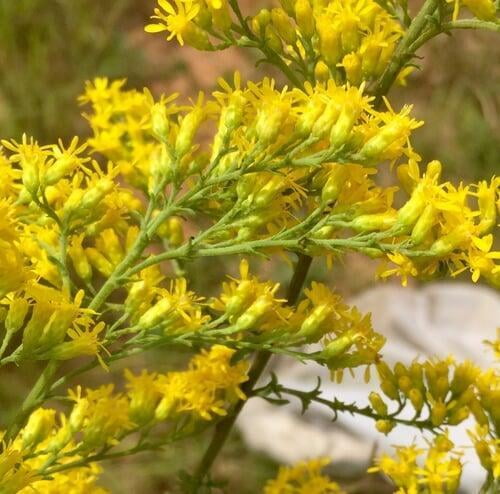Solidago nemoralis
Gray goldenrod Description:
Solidago nemoralis, commonly known as gray goldenrod or old field goldenrod, is a native North American wildflower species that belongs to the Asteraceae family. This herbaceous perennial plant is known for its distinctive gray-green leaves and bright yellow flowers that bloom in late summer and early fall, attracting a wide range of pollinators such as bees and butterflies. Solidago nemoralis is a tough and resilient plant that can thrive in a variety of conditions, including dry and infertile soils, making it an excellent addition to wildflower meadows, prairie gardens, and other naturalized areas.
Apart from its ornamental value, Solidago nemoralis has been used for centuries as a medicinal plant by Native Americans, who used it to treat a variety of ailments such as colds, flu, and sore throats. The plant contains flavonoids and other compounds that have anti-inflammatory and antioxidant properties, making it a valuable plant for traditional medicine. Additionally, Solidago nemoralis has ecological value, as it provides food and habitat for various species of wildlife. Its nectar and pollen attract pollinators such as bees and butterflies, and its seeds are a food source for birds and small mammals. Overall, Solidago nemoralis is a valuable and versatile plant species that adds beauty, ecological value, and medicinal properties to natural areas and gardens.
Native Range:
Gray goldenrod is found across a wide swath of the United States from Montana to New Mexico and Eastward to the Main and Florida.
Standard Plant Information:
Plant Height: 1' - 3'
Bloom Time: August - October
Preferred Habitat: Does well in part shade to full sun in dry and sandy or gravelly soil. Often found in prairies, open woodland, outcrops, and dunes.
Sowing:
For most homeowners, the best option is to scatter seed on the ground by hand broadcasting at a minimum of 16-64 pls ounces per acre. For even coverage, we recommend that you broadcast seed in perpendicular rows across the site to ensure even coverage.
You’ll want to broadcast any grass seed first, which will get raked into the soil lightly. Next, it is ideal to mulch the area lightly with either a clean (no seed) straw or preferably with our native Little Bluestem straw, sold at our retail garden centers. After a light mulching is complete, now it’s time to broadcast your native wildflower seeds, which should not be raked into the soil. A good rain or watering is sufficient to cover the seed.
Planting:
Simply dig a hole in the soil slightly larger than the plant’s roots. Ensure that the soil line of the plant is maintained during the transfer (i.e. the plant should be at the same level with the ground as it was in the pot). Pack any loose dirt back around the plant and make sure you water it well the same day to ensure it has the best chance of survival.

